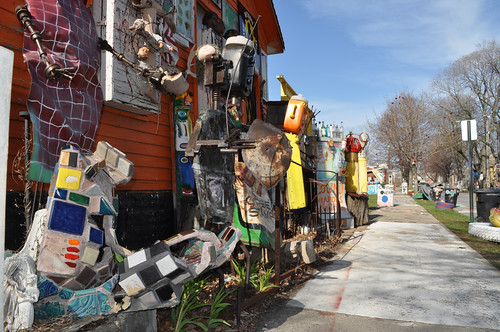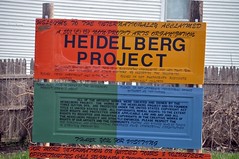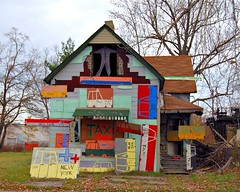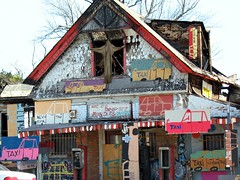A Powerful Statement in the Form of Urban Folk Art: Detroit's Amazing Heidelberg Project
Detroit's problems of urban distress, decay, and inner-city abandonment are all too well-known. Yet the city remains host to some amazing architecture and resilience. I have come across no more impressive example than artist Tyree Guyton's amazing, two-block Heidelberg Project.
Named for the east-side street on which it sits, the project was initiated in 1986 by Guyton and his grandfather. Here's how it is described on its website:
"The Heidelberg Project is art, energy, and community. It's an open-air art environment in the heart of an urban community on Detroit's East Side. Tyree Guyton, founder and artistic director, uses everyday, discarded objects to create a two block area full of color, symbolism, and intrigue.
Now in its 25th year, the Heidelberg Project is recognized around the world as a demonstration of the power of creativity to transform lives.
"The Heidelberg Project offers a forum for ideas, a seed of hope, and a bright vision for the future. It's about taking a stand to save forgotten neighborhoods. It's about helping people think outside the box and it's about offering solutions. It's about healing communities through art - and it's working!"
According to the project's Wikipedia entry, it was almost destroyed by the city government twice: In November 1991, the project's "The Baby Boy House," "Fun House" and "Truck Stop" were completely demolished. A second demolition of the Heidelberg Project was ordered on February 4, 1999, and ended in the destruction of the houses Guyton termed "Your World", "Happy Feet" and "The Canfield House". Today it is a protected landmark.
By using art to foster pride and community where both have been repeatedly threatened, the Heidelberg Project has much in common with Houston's Project Row Houses and LA's Watts House project, which I most recently referenced last week in the course of discussing art and community. It also has something in common with Candy Chang's inspired "Before I Die" interactive artwork on a house in New Orleans and, for that matter, with Simon Rodia's iconic Watts Towers. I'm way impressed.
Below are two excellent videos. The first is a fast-moving slideshow of striking images from the work, set to a wonderful soundtrack:
The second is Tyree Guyton's own description:
Move your cursor over the images for credit information.




